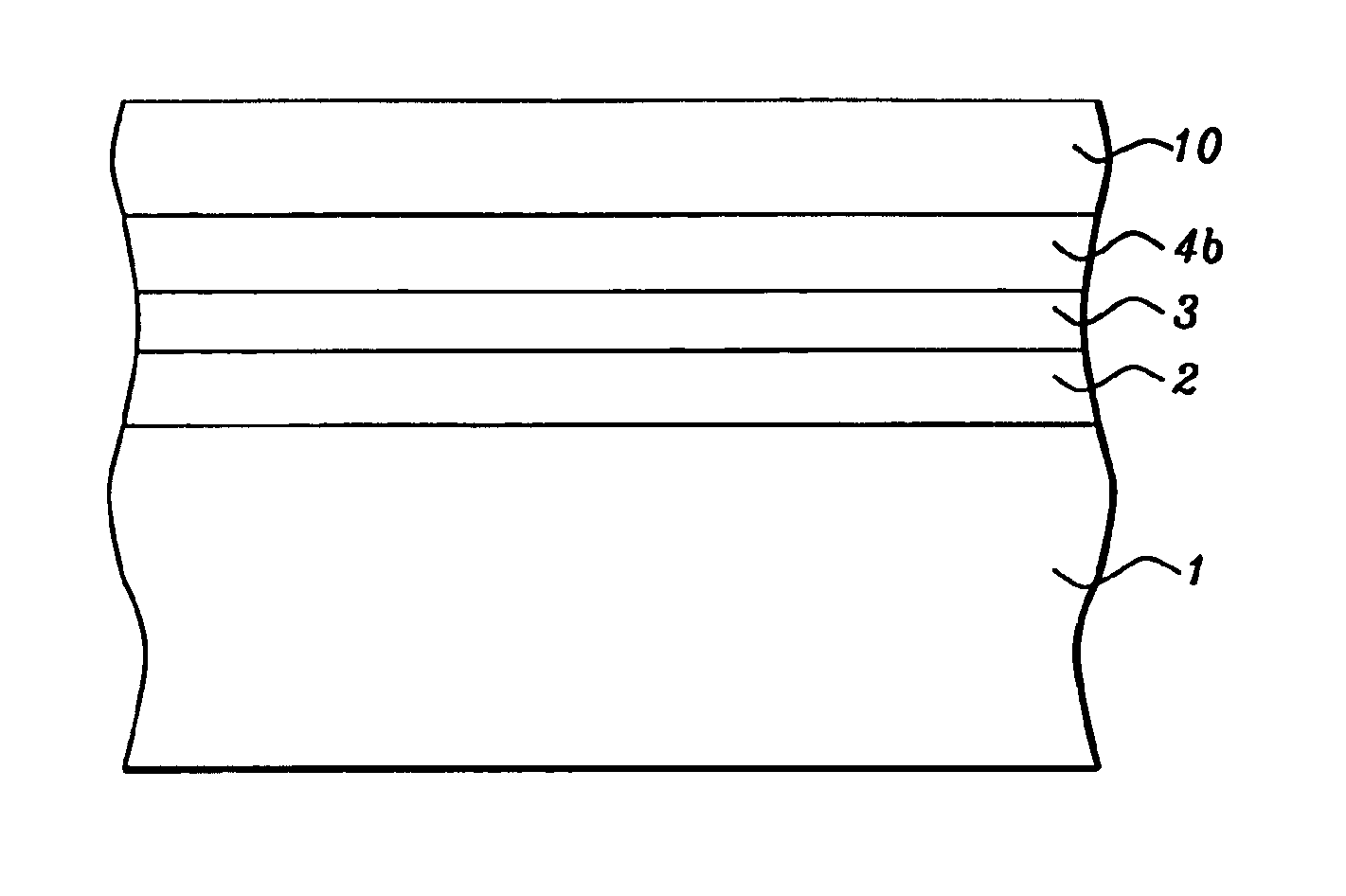Relaxed silicon germanium substrate with low defect density
- Summary
- Abstract
- Description
- Claims
- Application Information
AI Technical Summary
Benefits of technology
Problems solved by technology
Method used
Image
Examples
first embodiment
Critical, silicon layer 10, the desired layer to be used to accommodate the channel region for subsequent CMOS devices, is next epitaxially grown, and schematically shown in FIG. 5. Silicon layer 10, is epitaxially grown using silane or disilane as a source. The thickness of silicon layer 10, is less than it's critical thickness to maintain the desired strain in silicon layer 10. Thus the desired configuration needed to accommodate high performance, low leakage MOSFET devices, a strained silicon layer, on an underlying, relaxed low defect density layer, has been achieved via use of the above first embodiment of the invention.
second embodiment
this invention, the process of forming a strained silicon layer on a relaxed, low defect density semiconductor layer, is next addressed and schematically shown using FIGS. 6-7. Epitaxial growth of the identical composite layer described in the previous embodiment via growth conditions, and using thicknesses identical to those used and previously described for the first embodiment of this invention, is again performed, however for this case followed by an anneal procedure. The anneal procedure results in additional relaxation of the overlying, SiGe layer, as well as additional decreases in defect density of this layer, when compared to counterpart SiGe layers not subjected to the anneal procedure. Anneal procedure 5, can be performed to thin, strained SiGe layer 4a, at a stage prior to completing the entire epitaxial growth procedure, then followed by additional epitaxial growth resulting in relaxed, low defect density, SiGe layer 4b, as shown schematically in FIG. 6. If desired the ...
third embodiment
this invention entails the use of ion implantation procedure 7, to weaken silicon layer 3, to allow overlying semiconductor alloy layer 4b, to be epitaxially grown again with increased relaxation and decreased defect density, when compared to counterpart layers formed on non-implanted, underlying silicon layers. The ability to obtain a relaxed, low defect density SiGe layer, improves the ability to subsequently grow a thin, strained silicon layer, under tensile strain. Growth of SiGe layer 4b, shown schematically in FIG. 8, featuring enhanced relaxation and low defect density, less than 1E3 defects / cm2, as a result of epitaxial growth on an underlying, implanted silicon layer, is next accomplished at an identical thickness, as well as using identical process parameters, as used with counterpart SiGe layers described in the previous embodiments. The attainment of SiGe layer 4b, featuring the improved parameters, again allows the epitaxial growth of strained silicon layer 10, to be ac...
PUM
 Login to View More
Login to View More Abstract
Description
Claims
Application Information
 Login to View More
Login to View More - R&D Engineer
- R&D Manager
- IP Professional
- Industry Leading Data Capabilities
- Powerful AI technology
- Patent DNA Extraction
Browse by: Latest US Patents, China's latest patents, Technical Efficacy Thesaurus, Application Domain, Technology Topic, Popular Technical Reports.
© 2024 PatSnap. All rights reserved.Legal|Privacy policy|Modern Slavery Act Transparency Statement|Sitemap|About US| Contact US: help@patsnap.com










